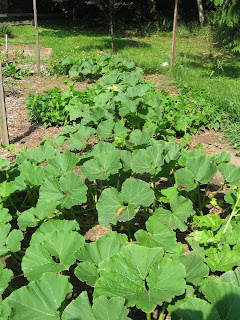Thoughts:
- Crumbly, decomposed hardwood (Maple, Birch) from the forest floor may be able to suffice for peat.
These books provide background on the ideas of organic pioneers – what influenced their thinking about agriculture as a natural process, and what taught them to relate agriculture to nutrition and human well-being.
These books are listed in the order in which they might be best read. Someone wanting a short course might choose just those marked with an asterisk (*). If you read just one, read Wickenden.”
- Make Friends With Your Land - (*) by Leonard Wickenden (1948). When Leonard Wickenden retired from his career as a chemist he became enthusiastically involved with organic gardening. He investigates organic practices from a scientific perspective and comes out 100% in their favour. This is an amazingly perceptive and well-researched organic farming book to have been written as long ago as 1948. It is delightful reading in the bargain.
- Soil and Sense - (*) by Michael Graham (1941). A small early volume which relates the history of the close relationship between grasses, pastures, livestock and soil fertility.
- The Stuff Man’s Made Of – (*) by Jorian Jenks (1959). The origin, the philosophy and the scientific evidence behind organic gardening make for interesting reading. Jenks was the editor of the Journal of the Soil Association in England for many years and has an encyclopaedic grasp of the subject.
- Farmers of Forty Centuries – (*) by F.H King (1911). One of the all time classics, this book tells the story of King’s journey through China, Korea and Japan. He details the age-old use of organic matter to maintain fertlity of the soils. Profusely illustrated with photos. A fascinating read.
- The Soil and Health – by Sir Albert Howard (1947). This volume followed Howard’s seminal work, An Agricultural Testament. It is easier reading. He contends that the problems of agriculture need to be solved with biology rather than chemistry.
- Agriculture – A New Approach – (*) by P.H. Hainsworth (1954). When I was first getting started as an organic vegetable grower, i considered this the most competent and practical of all the books I read. Hainsworth was a successful market gardener and he knew his stuff.
- Plowman’s Folly – by Edward H. Faulkner (1945). This small volume, condemning the moldboard plow caught the general public’s attention in the late 40′s and 50′s in the same way ‘Silent Spring’ by Rachel Carson did in the 60′s and sold millions of copies.
- The Farming Ladder – by George Henderson (1944). Henderson is one of the most competent farmers to have ever written a book and he writes in an informal story telling style. He covers everything from how to start, how to focus on quality work and quality products, and, most importantly, how to make a living doing it.
- Compost – by Alwin Siefert (1962). An outstanding book on the hows and whys of producing and using first-class compost.
- Nutrition and the Soil – (*) by Dr Lionel Picton (1949). This is one of the first works on the subject of soil quality and human nutrition. Originally published in England as “Thoughts on Feeding”.
- The Soil and the Microbe – by Selan Waksman and Robert Starkey. A scientific book about what makes soil work. Micro-organisms are the key to soil fertility and Waksman was the early defender and pioneer.
- A Mirror of England – by H.J. Massingham (1988). Edited by Edward Abelson. John Massingham (1888-1952) was a vigorous champion of rural living, small farming and quality workmanship. I have over 20 of his books and every one is a gem. This anthology is a broad scale introduction to his thinking and his delightful writing style.



